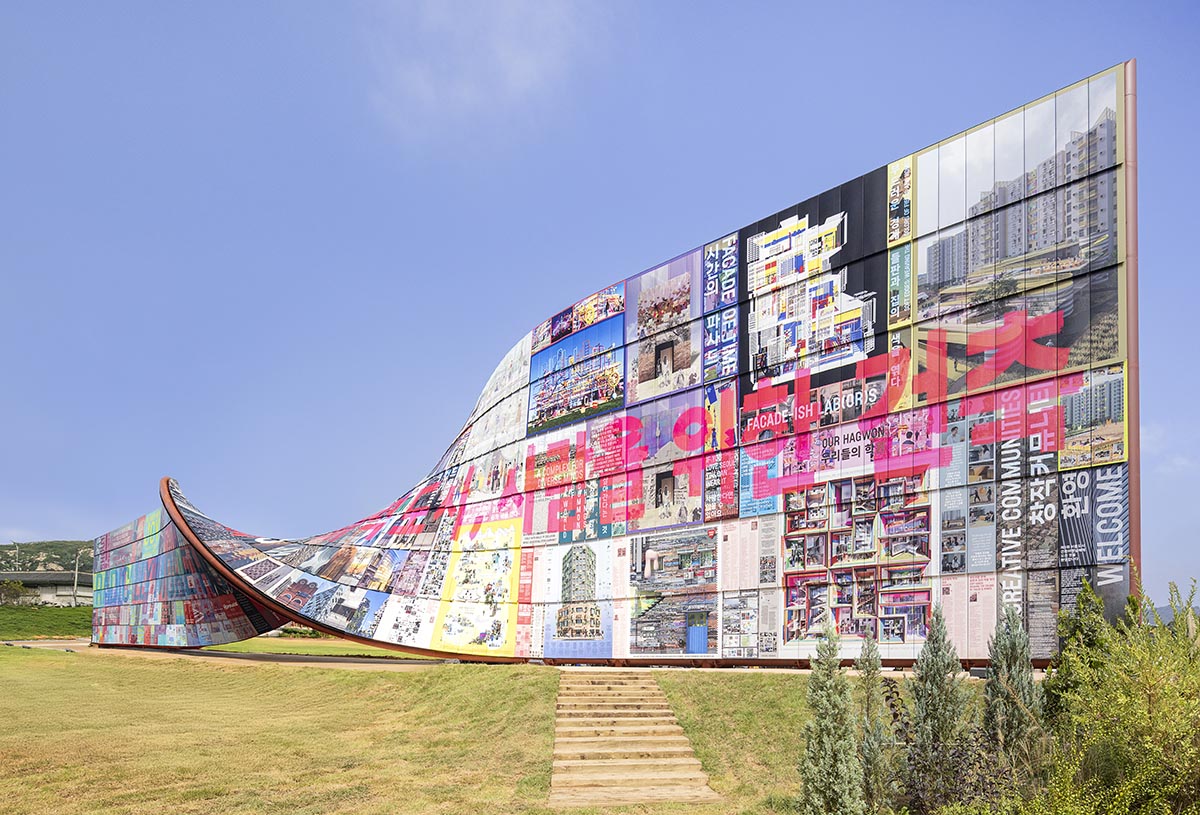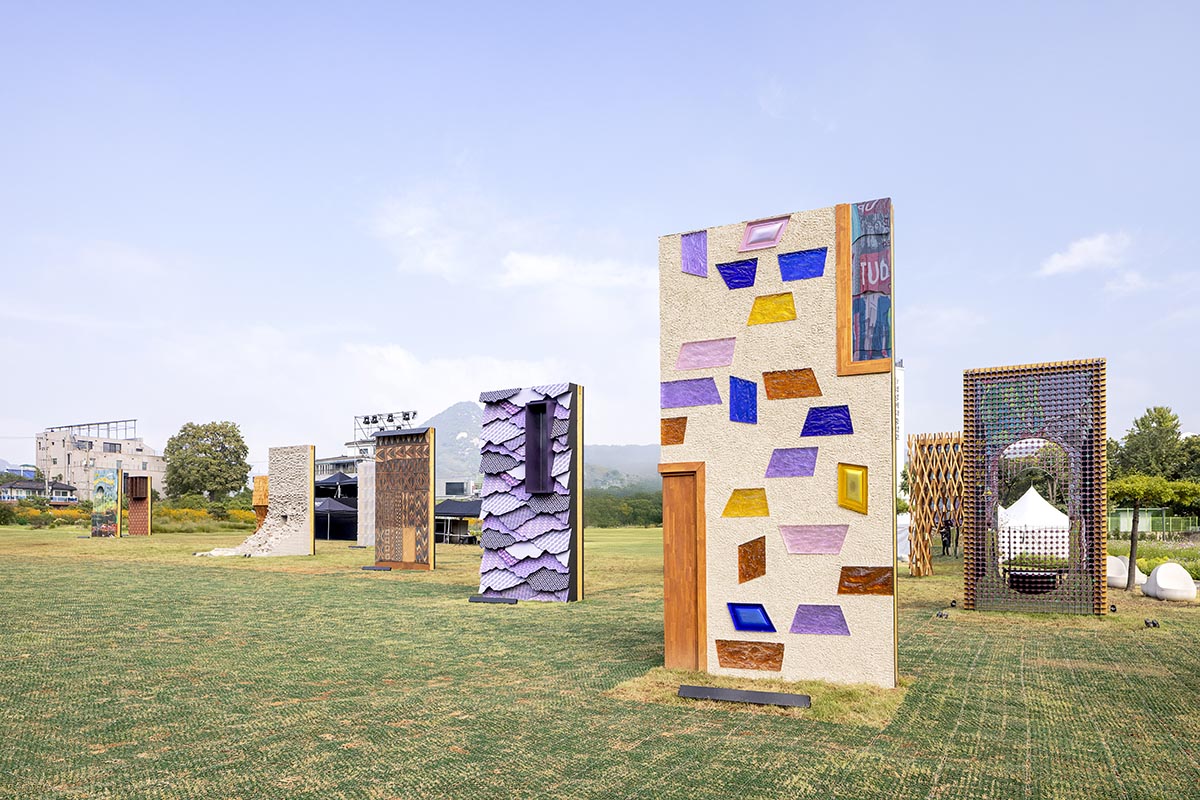Submitted by WA Contents
"We need buildings that bring us together and make us feel valued" says Thomas Heatherwick
Korea, South Architecture News - Sep 30, 2025 - 04:34 789 views

Thomas Heatherwick, the general director of this year's Seoul Biennale, emphasized the urgent need for architecture to foster human connection and a sense of value in a time of growing stress and conflict.
He said that the Biennale offers an exceptional opportunity to bring architectural discourse back to the forefront of public discourse, something that hasn't happened in many decades. Heatherwick praised Seoul's brave approach and urged that cities should mirror the aspirations of their citizens by being generous and character.
He presented the Biennale as an open invitation for individuals worldwide to imagine and promote a better future, given recent data showing that most Seoul residents believe that building design affects their emotions.

"We need buildings that bring us together and make us feel valued"
"In a world where people are feeling stressed, divided and alone, we need buildings that bring us together and make us feel valued," said Thomas Heatherwick, General Director of this year’s Seoul Biennale.
"This change will only happen when we all speak up. And the challenge now is to put architecture at the heart of public conversation in a way that nobody’s seen for generations."

"That’s what Seoul is doing here in such a bold and brilliant way. It’s demanding that cities should feel generous and full of character, built to be loved and last. This is based on a direct mandate from their citizens. New research shows that, despite most people feeling powerless, nine out of ten Seoulites say that building design affects how they feel and half of them want to get actively involved," he explained.
"For me, this Biennale is really an open-hearted invitation for people everywhere to dream more and demand better," Heatherwick added.

On Friday, September 26, Songhyeon Green Plaza in the center of Seoul hosted the opening of the 5th Seoul Biennale of Architecture and Urbanism. This will be the first large-scale, free cultural event in Korea that encourages widespread public involvement.
The largest public architecture festival in Asia is anticipated to draw millions of visitors.
The Seoul Biennale's general director, Thomas Heatherwick, will serve as curator for the event, which will examine ways to make cities fundamentally more human. The goal is to spark a public discussion on how to improve building exteriors for both people and the environment.
For 54 days, all Seoul residents are welcome to visit the park and take in the "Humanise Wall," a 90-meter-long, four-story building. This is composed of 1,428 steel tiles that have been engraved with the ideas and imaginations of designers, scientists, and residents. It showcases 400 structures designed by 110 architects in 38 nations, demonstrating the potential for vibrant, intriguing architecture.

The Wall curves in the middle, creating a portal that invites participants to the discussion. The tiles are adorned with a manifesto that outlines what individuals can do and how to alter our perspective.
Visitors can spend 20 minutes or two hours looking at each picture and article in the entire building, which functions as an exhibition unfolded in the park. And the closer you look, the more texture and detail you can see, much like in a beautiful building.
Twenty-four "Walls of Public Life" have been erected nearby. These enormous, 2.4-by-4.8-meter building parts were made by 24 design teams from all across the world to demonstrate how beautiful a building's exterior may be.
A wide variety of artistic and cultural backgrounds are represented among the designers. Some people have never constructed a structure before. Alongside architects and engineers from India, Korea, China, Japan, the United States, and Britain, they include the Korean American chef Edward Lee, the British fashion designer Stella McCartney, a jeweler, a Hyundai auto production team, and two traditional Burkina Faso builders.

The inaugural weekend includes a two-day worldwide forum titled "Emotional City," following an opening ceremony presided over by Seoul Mayor Oh Se-hoon.
In addition to launching three new research studies from the Humanise Campaign, this event bring together over 400 activists, scholars, and architects for a discussion on the effect of building facades on public health.
Emmy-winning actor Lee Jung-jae, the main character of Netflix's wildly popular series Squid Game, will make a guest appearance at the event, which also includes performances of recently commissioned dance, poetry, and music, including pieces by the innovative choreographer Jinyeob Cha.
The public is welcome to explore four exhibitions centered on Seoul's Hall of Urbanism and Architecture that explore the idea of making cities "radically more human" over the course of the next two months of the Biennale.
One highlights nine community-based initiatives that have engaged more than 500 Seoul residents in investigating their feelings toward the city's architecture. Each project has created stunning, thought-provoking photographs and information that expresses their desired changes to the city's architecture.
Another is "Emotionally yours, Seoul," a worldwide participation event in which everyone creates the show. In order to create a single collaborative digital artwork composed of facades and emotions, the event asks the public to submit images and sentiments produced by building exteriors.

These will coexist with "The City's Face," which explores the possibilities of human-centered architecture through 25 projects from 21 cities, and "From a Bird's Eye to the Human Eye," which showcases a collection of 18 new structures and areas that will shape Seoul's future from an up-close perspective of atmosphere and experience.
"The Seoul Biennale is a festival that makes the city more attractive and livable through the perspectives and participation of citizens. We look forward to a shared experience of walking, observing, and envisioning the future of our city together," said Chang su Lim, Director General of Future Urban Spaces Planning Bureau, the Seoul Metropolitan Government.
This year’s Seoul Biennale will be held from Friday 26 September to Tuesday 18 November at venues including Songhyeon Green Plaza and the Seoul Hall of Urbanism & Architecture. It will be a global event and feature four exhibitions along with a major global conference and a host of citizen-led, public engagement programmes.

Research indicates that being surrounded by uninteresting buildings that lack visual complexity can significantly affect public health and influence culture and society, as emphasized by the Humanise Campaign.
Curved façades and organic shapes may reduce cognitive stress and help make everyday surroundings more comfortable and intuitive (Llinares & Higuera-Trujillo, 2023, Environment and Behavior).
Conversely, buildings lacking texture, warmth, or variety can make people feel depressed and disconnected (Bower, Tucker & Enticott, 2019, Cities & Health), and architecture that is too uniform or repetitive can cause mental fatigue, disorientation, and stress (Chatterjee & Vartanian, 2014, Trends in Cognitive Sciences).
The top image in the article: Thomas Heatherwick. Image © Yongjoon Choi.
All images © Yongjoon Choi.
> via Seoul Biennale
Seoul Biennale of Architecture And Urbanism Thomas Heatherwick
